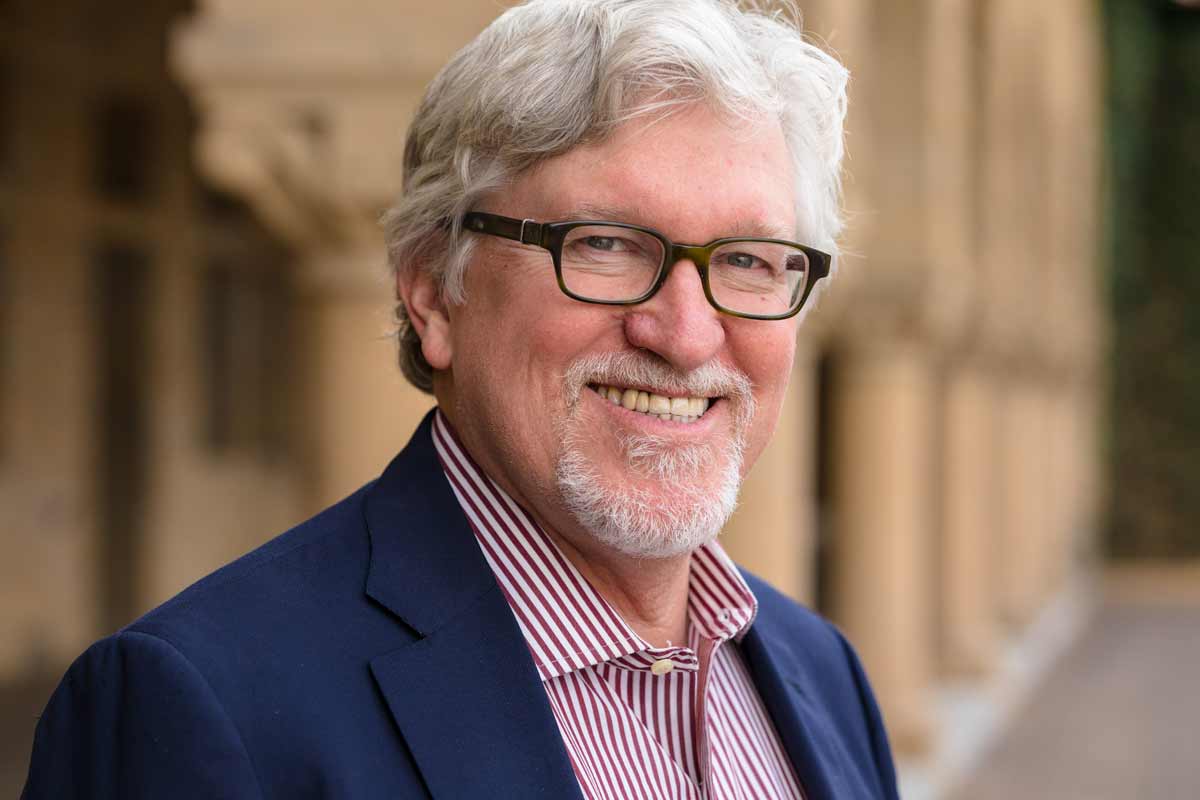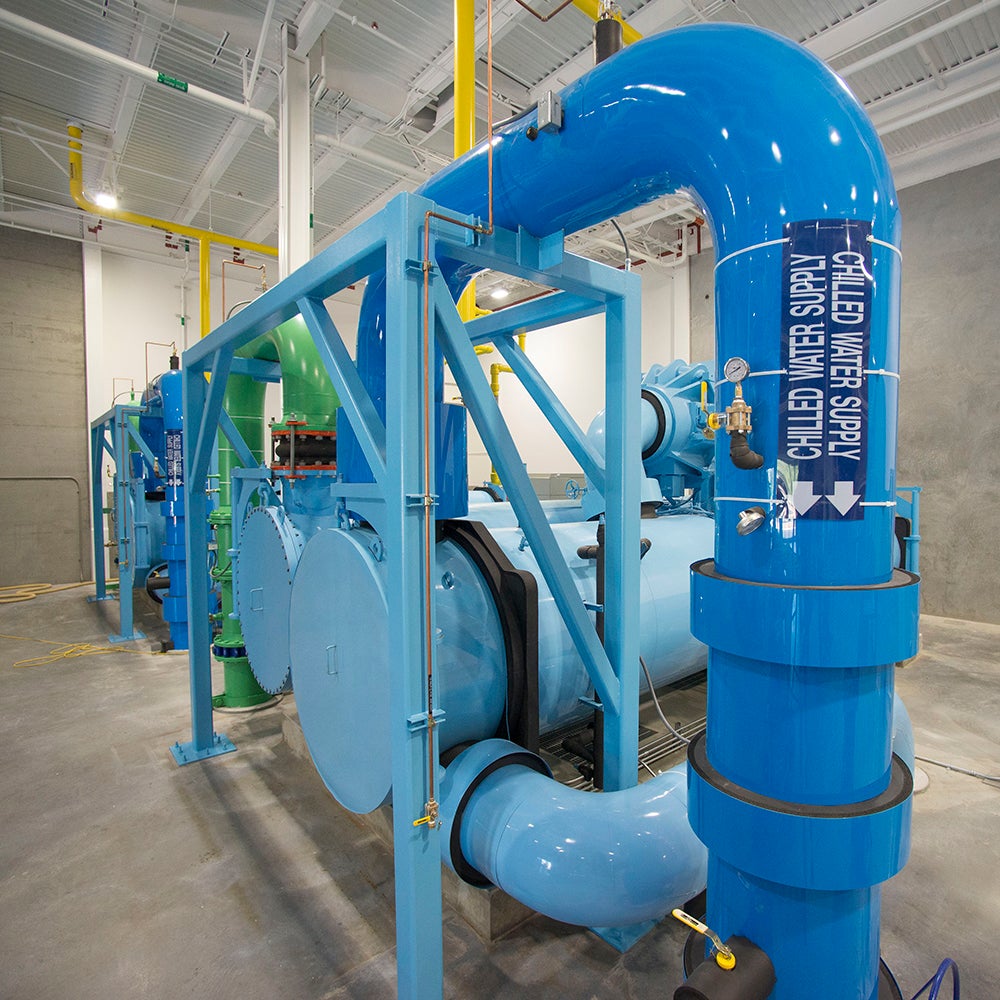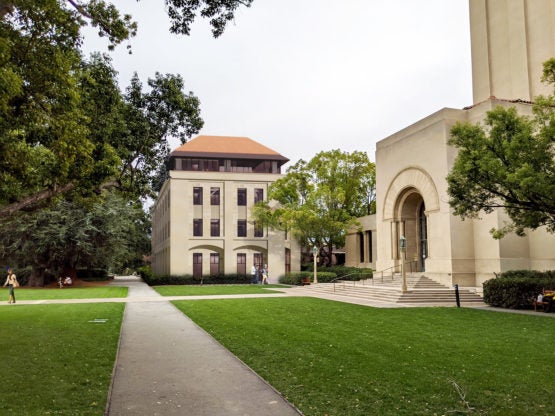Stanford trustees discuss ‘values’ in Long-Range Vision initiatives
At a meeting at which the Stanford Board of Trustees expanded financial aid and kept tuition steady, members also met with faculty at the heart of the university’s Long-Range Vision initiatives.
Stanford is “leading with our values,” including inclusion, equity and ethics, in its pursuit of initiatives under the Long-Range Vision (LRV), according to Jeff Raikes, chair of the Board of Trustees.

Jeffrey S. Raikes, chair of the Board of Trustees, said that the trustees intend to play an active role in helping build philanthropic support for Stanford’s Long-Range Vision initiatives. (Image credit: Aaron Kehoe)
Raikes’ assessment came at the end of the board meeting this week in which trustees continued discussions of initiatives with faculty leaders in several LRV areas.
LRV discussions came during the meeting in which the trustees also expanded financial aid for undergraduates and kept tuition at current levels. Read the story.
Long-Range Vision
According to Raikes, the trustees divided into breakout groups to meet with faculty most involved in the LRV initiatives, learning how each will affect Stanford and the broader world.
The trustees specifically discussed:
- The Changing Human Experience and Public Humanities with Lanier Anderson, senior associate dean for the humanities and arts in the School of Humanities and Sciences
- Ethics, Society & Technology with Margaret Levi and Rob Reich, both professors of political science
- IDEAL (Inclusion, Diversity, Equity and Access in a Learning Environment) with Claude Steele, professor emeritus of psychology
“We had the fabulous opportunity to hear from faculty who are leaders in these fields and have been developing plans for transformational things Stanford can be doing in each of these fields to advance its role as a purposeful university,” Raikes said.
The discussions, he said, revealed the importance of integrating values into Stanford’s Long-Range Vision. Raikes said the initiatives embed ethics in the pursuit of new technologies and the activities of daily life, and they reflect the university’s commitment to cultivating humanity.
He added, “Our discussion amongst the board really confirmed for me that I want Stanford students to graduate with their brilliance matched by their humanity. I want their innovation and entrepreneurship guided by humility, empathy and a deep responsibility to others. We’re not going to get that without prioritizing IDEAL, the humanities and ethics.”
Raikes promised that the trustees intend to play an active role in helping build philanthropic support for the LRV initiatives.
Construction news
The trustees also gave construction approval to the chilled water plant expansion at the Central Energy Facility. Work is expected to begin this spring on a project considered crucial to minimizing the risk of energy curtailments at campus buildings and the hospitals during heat waves.

Upgrades at the Central Energy Facility will include the addition of three new permanent chillers (like the ones shown here) as well as an extra backup chiller in case one of the others is offline. (Image credit: L.A. Cicero)
As part of the expansion, the Stanford Energy System Innovations (SESI) will nearly double its chilled water capacity by adding two new cooling towers that will allow its novel heat recovery chillers to operate when needed. Also added will be three new permanent chillers and cooling towers and an extra backup chiller in case one of the others is offline.
Raikes noted that the expansion addresses instances during the past several years in which heat storms have caused the load on the chilled water system to exceed capacity, resulting in cooling containment on campus and teaching and research disruptions.

Illustration of the proposed George P. Shultz Building at the Hoover Institution. (Image credit: Courtesy CAW)
The trustees also gave design approval for the new George P. Shultz Building, a four-story facility that will replace the existing Lou Henry Hoover Building. The Shultz Building is part of the long-range master plan to reinvigorate the Hoover Institution’s current facilities.
The project, which received trustee concept and site approval in October 2018, is being funded by private donors in honor of Shultz, who is the Thomas W. and Susan B. Ford Distinguished Fellow at Hoover. The Hoover Institution recently honored Shultz on his 100th birthday.
The building will include three levels of offices for Hoover fellows and research support staff, one level of conferencing space and a basement dedicated to priority archival functions, including digitization. Raikes said the project will likely return to the board for construction approval later this year.
COVID-19 updates
Raikes said the trustees continue to receive updates about the university’s COVID-19 challenges. At this meeting, trustees heard from President Marc Tessier-Lavigne, Provost Persis Drell and Medical School Dean Lloyd Minor.
Raikes described the decision not to have the full first-year and sophomore class back on campus for winter quarter a “big disappointment.” But, he noted, it was the result of thoughtful decision-making about the public health rules in effect and how those rules were likely to seriously limit the on-campus student experience for much of winter quarter.
Raikes said trustees also received updates on the major vaccination effort underway at Stanford Medicine. He noted that vaccinations have been offered to all eligible health care workers in the Stanford Health Care system. Vaccinations in Santa Clara County are now underway for those 65 and older. Still unclear is what role Stanford will play in the vaccinations for members of the campus community. However, a committee has been formed to consider future vaccination possibilities.
“I know I speak for the board in saying that we are enormously impressed and gratified by the tireless, dedicated efforts of people across the university who are helping the Stanford community – and the wider world – get through this pandemic,” he said.
